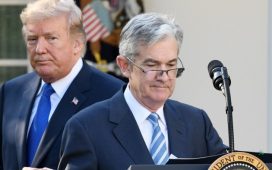Stay informed with free updates
Simply sign up to the US inflation myFT Digest — delivered directly to your inbox.
Tomasz Wieladek is chief European economist at T Rowe Price and a CEPR Research Fellow
Inflation is finally approaching target levels across advanced economies. Does this mean a return to the regime of low and stable inflation seen in the decades before the pandemic?
Investors seem to think so. Five-year / five-year inflation swaps in the Euro Area and the US are close to their respective targets.

Professional forecasters share this view. The consensus long-term inflation forecast among analysts for the euro area is 2 per cent and the dispersion of views has declined to normal levels. Similarly, the forecasters have been reseting their expectations of US inflation 10-years out. Everyone seems to believe that inflation will return to its boring old normal.


I disagree. Changes in central bank policy, expectations, labour markets and globalisation mean that inflation will likely stay volatile going forward.
Central banks reacted strongly to the recent surge in inflation. But calibrating the policy response perfectly in real-time, with so many moving pieces, is near impossible.
Activist fiscal policy to support the business cycle exacerbates this problem. After all, both monetary and fiscal policy tend to have long and uncertain lags. Central banks are therefore likely to under or overshoot their targets.
The degree that policy was overtightened or remains too loose will determine how large this deviation from target will be. But when inflation persistently deviates from target in the future, central banks will likely act again. Depending on circumstances, this could set the scene for another large inflation target miss.
The fact is that calibrating monetary policy to tame inflation in the presence of structural changes is very hard. The best that central banks can do is to achieve progressively smaller oscillations in inflation until the new optimal policy setting becomes clear.
Stable and anchored inflation expectations are the bedrock of low and stable inflation. But inflation expectations were stable precisely because inflation was low and stable. Central banks were seen as the guardians of price stability, which would keep inflation at target regardless of circumstances. Recent experience (and large forecast errors) has challenged this perception significantly.
As a result, inflation expectations will likely de-anchor much quicker in response to new inflation shocks than has been the case in the past. This will amplify future inflation shocks and lead to greater persistence.
Labour markets in advanced economies have remained very tight, even when activity is slowing. Pandemic effects on labour force participation and immigration restrictions have reduced the plentiful labour supply advanced economies have enjoyed in the past couple of decades. As more workers retire, population ageing will exacerbate these labour shortages.
In turn, employees have experienced a significant rise in bargaining power, last seen several decades ago. For example, German industrial unions continue to ask for high wage settlements, even though German industry is in a historically weak state. The rise in bargaining power will make inflation more persistent and second-round effects more likely.
Globalisation has been an important contributor to low and stable inflation in the past couple of decades. Trade openness has helped to move production to the most cost-efficient places. It has also made the supply side of the economy flexible. This has helped to offset the inflationary consequence of local demand shocks. But geo-political risks have made global supply chains significantly less resilient. Current and prospective tariff rises between the EU, US and China could further exacerbate the trend. Global supply chains are therefore unlikely to keep a lid on inflationary pressure the way it did in the past.
There are several inflation risks on the horizon. Countries will need to raise investment to deal with climate change. Higher military spending, particularly in European countries, will also consume a significant amount of resources. Government spending will expand the supply side of the economy and contribute to long-run disinflation, but the short-term strain on limited resources may have the opposite effect.
The large expansion of AI technology in the US will require a vast amount of energy. The US economy could become a net importer of energy again. This would have adverse inflation consequences for European countries, which rely on US LNG imports. While AI will likely have a disinflationary effect in the medium term, the associated energy consumption could contribute to higher short-term inflation.
It all adds to the challenge of making a well-calibrated monetary policy response. In this environment, large fluctuations in inflation are much more likely than before. This means that inflation volatility is here to stay. Policy makers and investors need to be aware of the risk that inflation will not become boring anytime soon.









